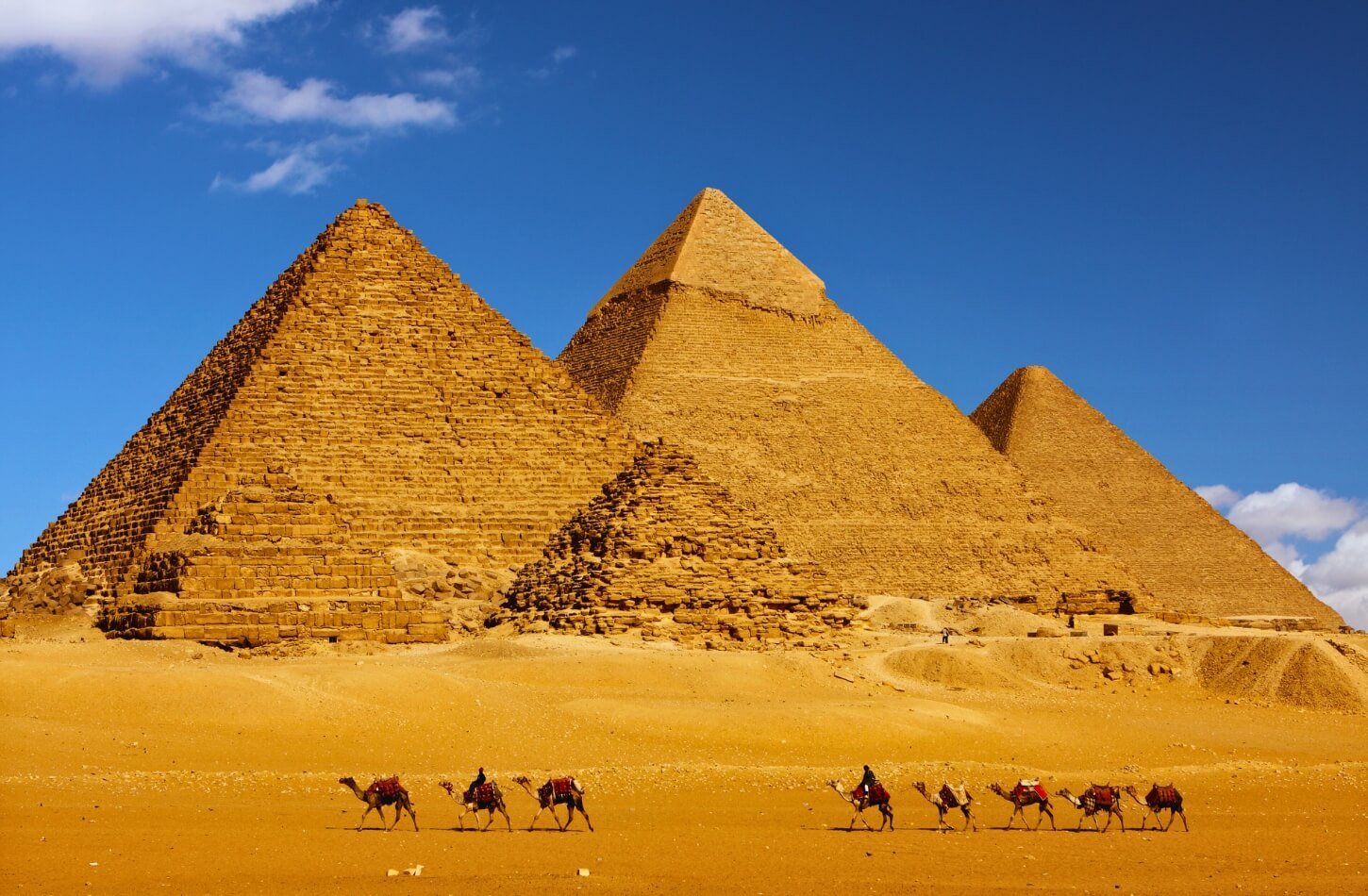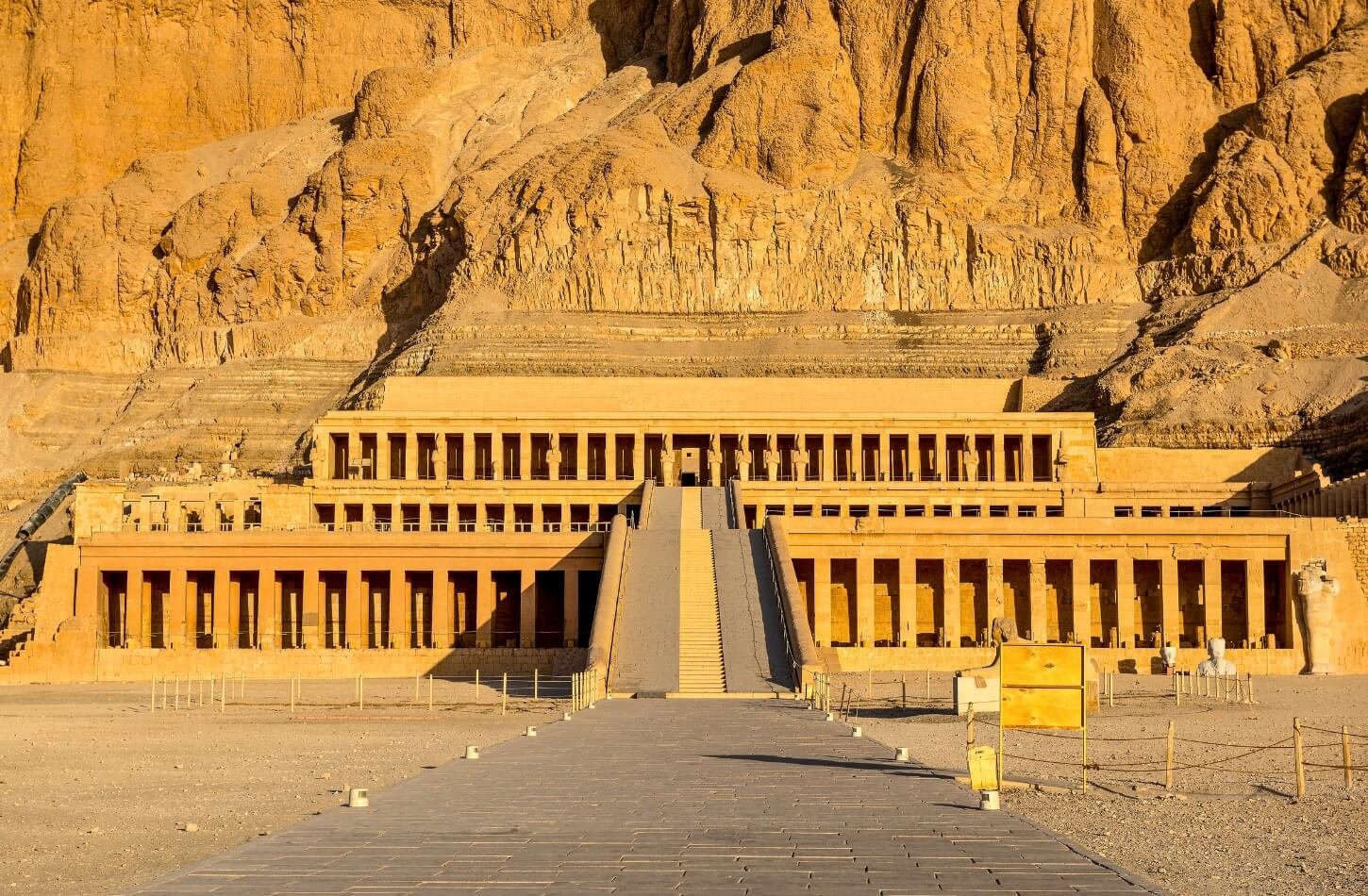Imagine standing on the sun-kissed islands of the Nile River. You’re surrounded by the majestic beauty of ancient Egypt. You’re about to explore one of Egypt’s most breathtaking sites: the Temple of Isis, located near Aswan.
This stunning example of ancient architecture is dedicated to the goddess Isis. It’s a must-visit for anyone fascinated by history. Situated on Agilkia Island, the temple offers a glimpse into Egypt’s rich past.
As you wander through the temple’s grounds, you’ll uncover the secrets of this ancient wonder. With its unique blend of history, architecture, and cultural significance, it is an unforgettable experience.
A Brief History of the Philae Temple
When you enter the Philae Temple, you step into ancient history. This Ancient Egyptian temple was built on Philae Island. It was dedicated to Isis, the goddess of magic and motherhood.
The temple shows the ancient Egyptians’ skill in building. It was built to honor Isis and for worship. Its carvings and hieroglyphics tell stories of gods and pharaohs.
The temple faced a big problem when the Aswan Low Dam was built. It flooded the island. An international effort moved the temple to Agilkia Island in the 1960s. Now, it’s a UNESCO World Heritage Site.
The Philae Temple’s history is more than its building or move. It was a major pilgrimage site. People came from all over to worship Isis.
Today, visiting the Philae Temple is like stepping into history. Its rich history and fame make it a top spot. It’s perfect for history, architecture, or Egypt’s cultural heritage lovers.
The Architecture of Philae Temple
The Philae Temple, moved to its current spot, still amazes everyone. You see intricate carvings and hieroglyphics on its walls. These show scenes from Egyptian myths.
The Grand Pylon is a key part of the temple. It’s a big entrance that shows off ancient Egyptian engineering skills. It’s truly impressive.
Inside, you find the Sanctuary of Isis. It’s a special place for the goddess Isis. The reliefs and hieroglyphics here tell us about old-time religious practices.
The Courtyard of the Philae Temple is also worth seeing. It has colonnades and feels peaceful. The ancient Egyptians designed it well, using space wisely.
The temple’s design shows its cultural and religious importance. It’s a top example of Ancient Egyptian temples. It has amazed visitors for ages, standing by the Nile River.
Important Deities Linked to Philae Temple
Egyptian mythology comes alive at Philae Temple. Isis, Osiris, and Horus play big roles here. The temple mainly honors Isis, seen as a powerful mother and Egypt’s protector.
The temple’s carvings and hieroglyphics show scenes from Egyptian myths. They highlight the roles of Osiris and Horus. You’ll see stories of Osiris, the god of the afterlife, and Horus, the god of kingship and protection.
The Significance of Isis
Isis was key in Philae Temple’s mythology. She was known for her magical powers and protecting pharaohs. Her role in the temple shows her big importance in ancient Egyptian religion.
Osiris and Horus: Key Figures in Egyptian Mythology
The myths of Osiris and Horus are tied to the temple. Osiris was a ruler killed by Seth but brought back to life by Isis. Horus, their son, fought for justice, showing good over evil. These stories are in the temple’s reliefs, showing the deep bond between the gods and the temple.
Exploring it, you’ll find the rich world of Egyptian mythology. It shows the lasting impact of Egyptian mythology and its gods.
Exploring the Temple’s Main Attractions
Your visit to the Philae Temple won’t be complete without exploring its main attractions. As you wander through the temple grounds, you’ll be struck by the Grand Pylon. This impressive entrance sets the tone for the wonders within.
The Sanctuary of Isis is another highlight. It’s a sacred space where ancient rituals were performed in honor of the goddess Isis. This area is not only historically significant but also provides a glimpse into the spiritual practices of the time.
The Courtyard of the Philae Temple offers a serene atmosphere. It’s a perfect spot to reflect on the history and significance of the site. Visitors can pause and appreciate the beauty of the temple’s architecture.
In the evening, the Philae Temple comes alive with its sound and light show. This spectacular display brings the temple’s history to life through music and illumination. It’s a must-see for anyone visiting the temple.
Each of these attractions contributes to the rich tapestry of the Philae Temple experience. A visit here is an unforgettable journey through ancient Egyptian history and culture.
The Philae Temple’s Relocation
In the 1960s, a big move happened in history. The Aswan High Dam was built, and it threatened the Philae Temple. This led to a global effort to move the site.
The Philae Temple was on Philae Island, near the Aswan Dam in Egypt. When the dam was built, the temple was taken apart and moved to Agilkia Island. This saved it from being lost under the dam’s water.
UNESCO led this huge task with help from all over the world. Moving the temple was a big challenge. It showed how people can work together to save old places.
Every stone of the temple was carefully taken down and put back together on Agilkia Island. This careful work made sure the temple’s history and beauty were kept safe for others to see.
Now, the temple is a symbol of Egypt’s long history. It shows how smart people can solve big problems. People from everywhere can visit and see the temple’s beauty and importance.
Visiting Philae Temple Today
Imagine a calm boat ride on the Nile River ending at the Philae Temple. It’s on an island near Aswan, Egypt. This ancient place is a top spot for anyone visiting the area.
To get to the Philae Temple, take a boat from Aswan Marina. The trip shows off amazing views and lets you feel the river’s calm.
At the temple, you can see the Grand Pylon, the Sanctuary of Isis, and the Courtyard. Each spot is full of history and design. It shows what life was like for ancient Egyptians.
Seeing the Philae Temple is a memorable trip. It mixes history, culture, and nature’s beauty. Whether you love history, architecture, or just beautiful places, the Philae Temple will impress you.
Cultural Significance of the Temple
It shows the rich culture of Ancient Egypt. It draws visitors from everywhere. It tells us about the myths, rituals, and daily life of the ancient Egyptians.
The temple’s stunning architecture and detailed hieroglyphics are key. They give us a peek into the lives of those who made it. The temple’s designs and carvings share myths and legends, showing the ancient Egyptians’ beliefs.
Being a UNESCO World Heritage Site, the Philae Temple is known worldwide. This shows its value to Egypt and the world. Moving the temple to its new spot was a big effort to save cultural treasures.
Key Aspects of Cultural Significance
The Philae Temple’s cultural value is seen in several ways:
- Religious Importance: It was a key place for pilgrims to visit the goddess Isis.
- Architectural Innovation: Its design shows the ancient Egyptians’ advanced engineering skills.
- Cultural Icon: The temple is a symbol of Ancient Egypt, inspiring art, literature, and tourism.
Visiting the Philae Temple lets you connect with Ancient Egypt’s history and culture. It’s a deep and rewarding experience. The temple’s cultural importance keeps inspiring people everywhere.
Myths and Legends Surrounding Philae Temple
Exploring the Philae Temple reveals a world of myths and legends that have amazed people for ages. The temple’s importance comes from the stories of Isis and Osiris. These are key figures in ancient Egyptian myths.
The story of Isis and Osiris is filled with love, loss, and rebirth. Osiris was murdered by his brother Seth. Isis, his loving wife, found his pieces and brought him back to life. This allowed her to conceive their son, Horus.
It celebrates this myth. Its walls show carvings and hieroglyphics of Isis and Osiris’s tale. These artworks highlight the Egyptians’ skill and the temple’s sacred status.
Visiting the Philae Temple is like stepping into these legends. The stories of Isis, Osiris, and Horus come to life among the temple’s grand design. These myths deepen our understanding of ancient Egyptian culture and its lasting impact.
Preservation Efforts for Philae Temple
The move of the Philae Temple was a huge challenge. It was done by UNESCO to keep it safe from the Aswan Low Dam. They dismantled the temple’s structures, moved them to Agilkia Island, and put them back together.
But it wasn’t just about moving it. They also worked hard to keep its cultural and historical value. This way, UNESCO made sure the Philae Temple stays important to Egypt’s history. You can find out more about the careful planning and work that went into this big project.
As a UNESCO World Heritage Site, the Philae Temple shows how to save cultural sites. Its success shows the power of working together to protect our shared history. The story of the Philae Temple inspires conservation efforts everywhere.
Key Aspects of the Preservation Efforts
The move was done with great care. They dismantled over 40,000 blocks. Each block was numbered and put back in its place. This careful work kept the temple’s look and feel the same.
The saving of the Philae Temple is truly amazing. It not only saved a historical place but also made sure people in the future can still enjoy its beauty and importance.
How Philae Temple Inspires Art and Literature
The Philae Temple has inspired artists and writers for centuries. Its stunning architecture and rich history have captivated many. This has influenced a wide range of artistic works.
The Temple’s Timeless Appeal
Many artists, writers, and musicians have been inspired by the temple. Its intricate carvings and hieroglyphics have been subjects of many works. This includes paintings and sculptures.
A Source of Inspiration
The Philae Temple’s influence is seen in many areas of art and literature. Its beauty and cultural significance continue to inspire. This ensures its legacy as a timeless source of inspiration.
Fun Facts About the Philae Temple
The Philae Temple has many interesting facts and trivia. One cool thing is that it was moved to Agilkia Island in the 1960s. This was a big effort to save it.
When you visit the Philae Temple, you’ll learn about its deep cultural meaning. You’ll also hear about the myths tied to it. Don’t miss the sound and light show. It makes the temple’s history come alive.
Seeing the Philae Temple is like going back in time. You’ll see the beauty of Ancient Egypt. Its history, architecture, and fun facts will amaze you.
Planning a trip to this amazing place? You’ll want to find out more about its secrets. And experience the magic of the Philae Temple for yourself.







